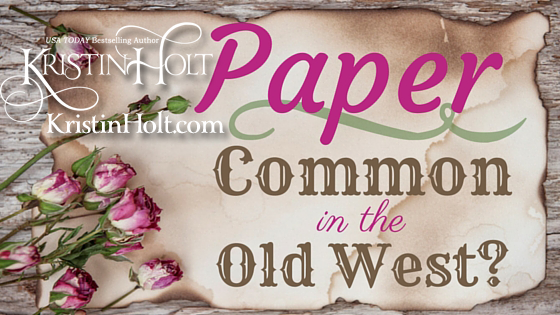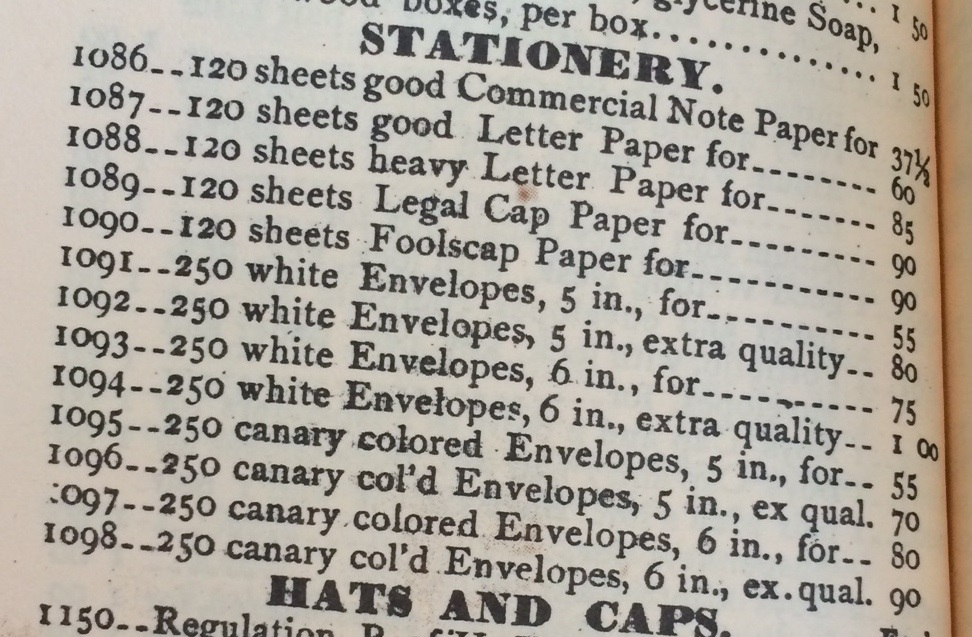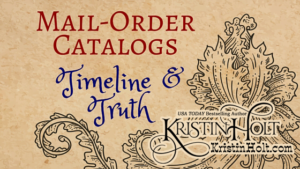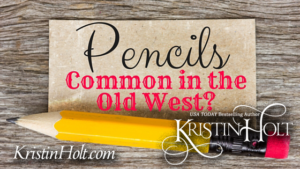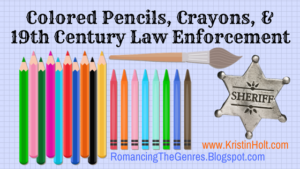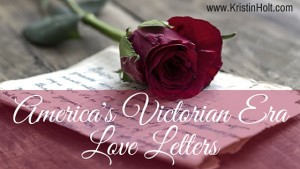Paper: Common in the Old West?
Paper: Common in the Old West?
.
We’ve determined pencils (and pens) could indeed be classified as “common” in the Old West. But what about paper? I’ve read books where the intrepid hero has to reuse brown paper the mercantile owner used to wrap a purchase in order to leave the heroine an all-important note. I read another novel where a would-be bride’s employer deducted the cost of paper and envelope from her wages.
.
Was paper that expensive?
.
Did expense translate to scarcity?
.
Was paper common in the Old West?
.
This 1888 newspaper article indicates slates (for students in public schools) had become a thing of the past, and reading a bit between the lines (“when we were boys”) suggests the slate had been passé, perhaps for a generation.
.
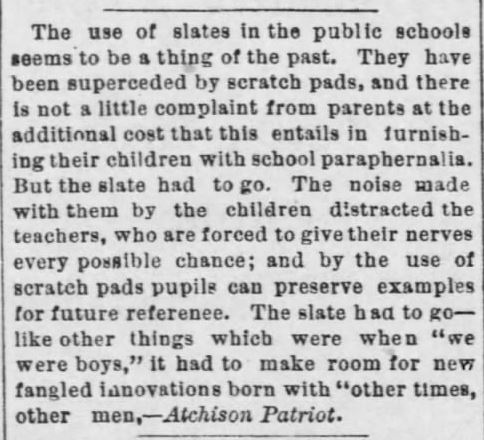
Quoted from Atchison Patriot (Atchison, Kansas) in Lawrence Daily Journal of Lawrence, Kansas on March 28, 1888.
.
This newspaper article references scratch pads, a term still common today. The product listing, below, comes from the unabridged facsimile Montgomery Ward & Co. Catalogue & Buyer’s Guide (1895).
.
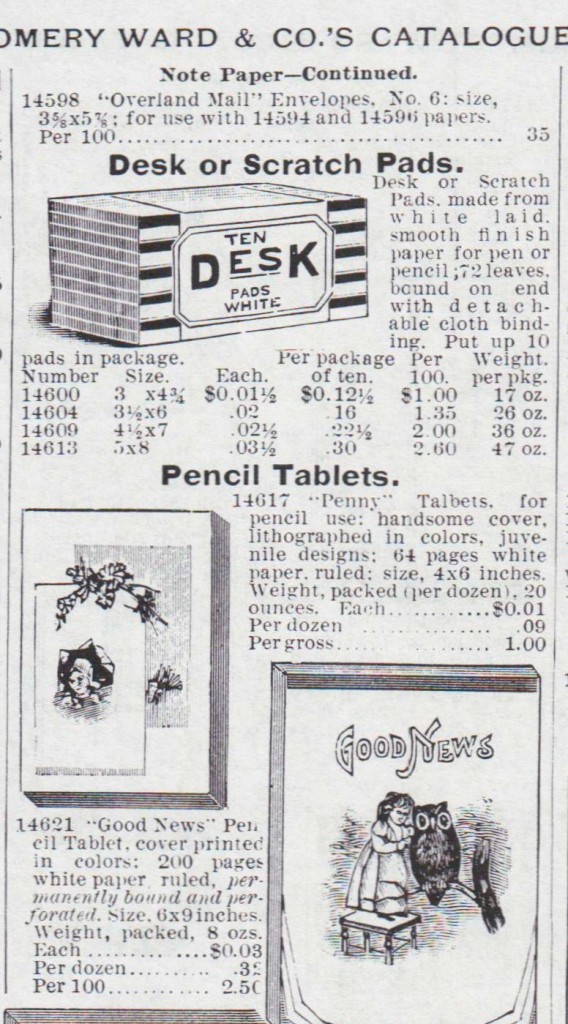
Desk or Scratch Pads, Pencil Tablets offered for sale by Montgomery, Ward and Co. Catalogue 1895.
.
Note the highly reasonable price for 4 graduated sizes of scratch pads (not overly large, but for most purposes, highly functional). Seventy sheets of scratch paper (sewn together into a pad/tablet) in the largest (5×8-inch) size cost a whopping 3.5 cents, and a package of ten such tablets cost a discounted 30 cents. Granted, inflation has affected pricing quite a bit. But keep in mind the prices of pencils at the same time period (roughly 2 to 13 cents each). For the price of an inexpensive every-day pencil, a body could purchase a pad of paper (at least from a mail-order catalogue).
.
.
The Stationery Department (including envelopes, note cards, paper tablets, single sheet papers, special correspondence notes, fine stationery, tinted linen note paper, blotting papers, fancy boxes to hold stationery products) runs more than 3 pages (approximately 9.5 x 12-inches)… and that’s before the company gets around to offering writing utensils. The following two images show a few more of their many options.
.
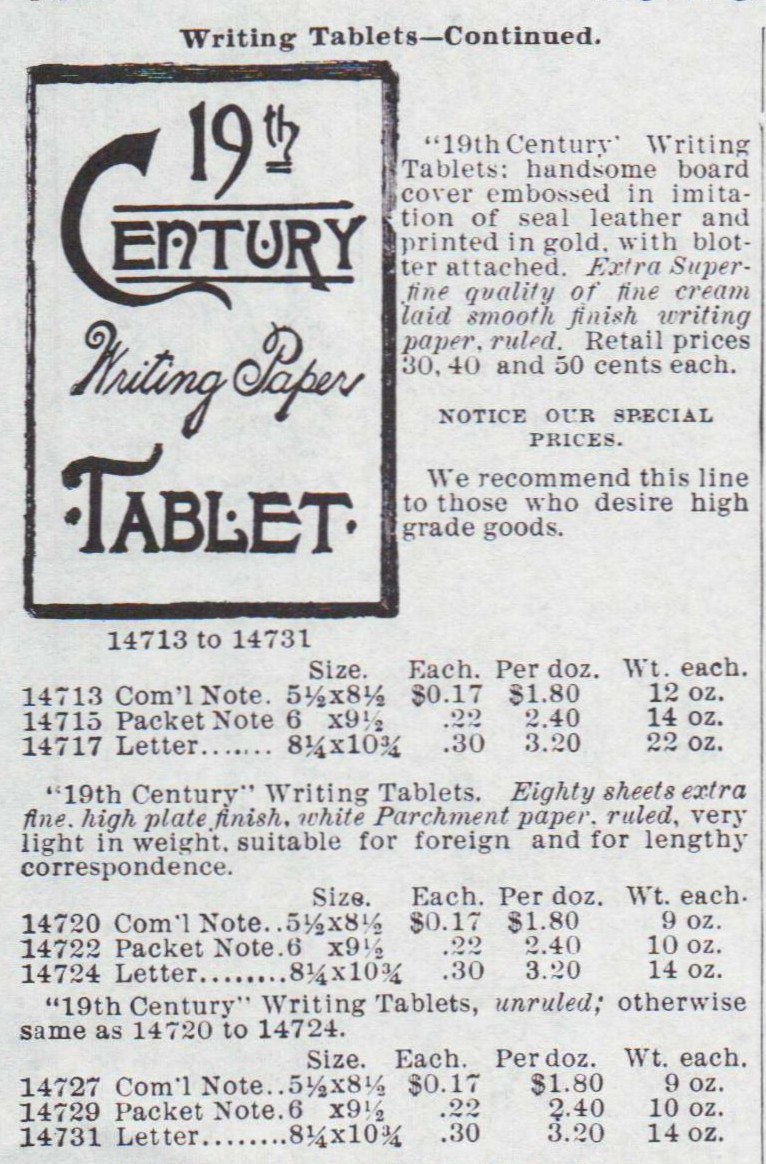
19th Century Writing Paper Tablet as presented in the Montgomery Ward & Co. Catalogue (unabridged facsimile) & Buyer’s Guide, 1895, p. 112.
.
![]()
.
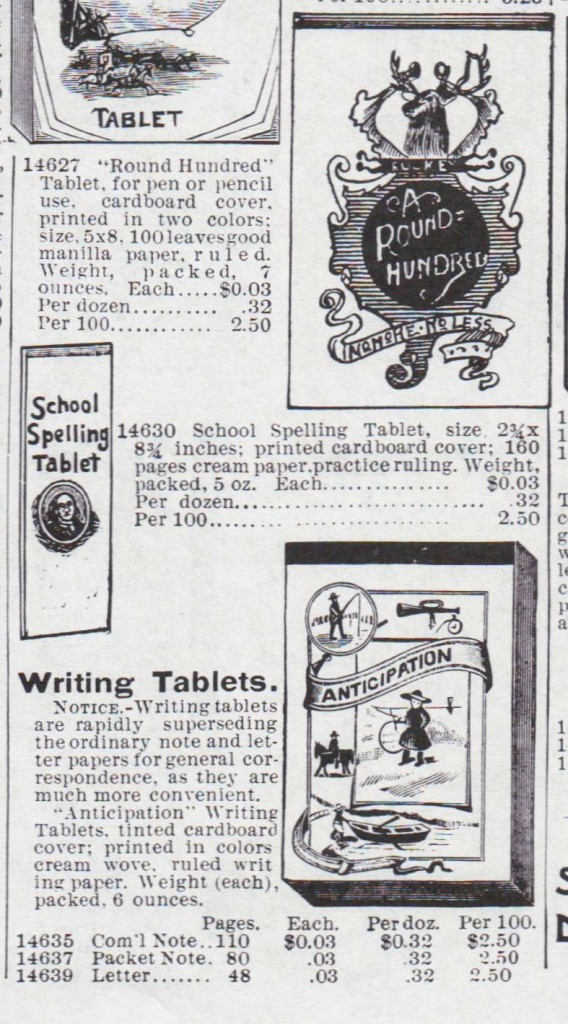
Additional options from the Montgomery Ward & Co. catalogue (1895), including a School Spelling Tablet, general Writing Tablets, and “manilla paper” for general use and correspondence. Pg. 111 of catalogue.
.
Twenty years earlier, in the Montgomery Ward & Co. Catalogue No. 13 (Spring and Summer, 1875), paper was a bit more expensive.
.
…and far fewer choices were offered by this company through the mail. The company had only been in business for about three years at that time (founded in Chicago in 1872).
.
.
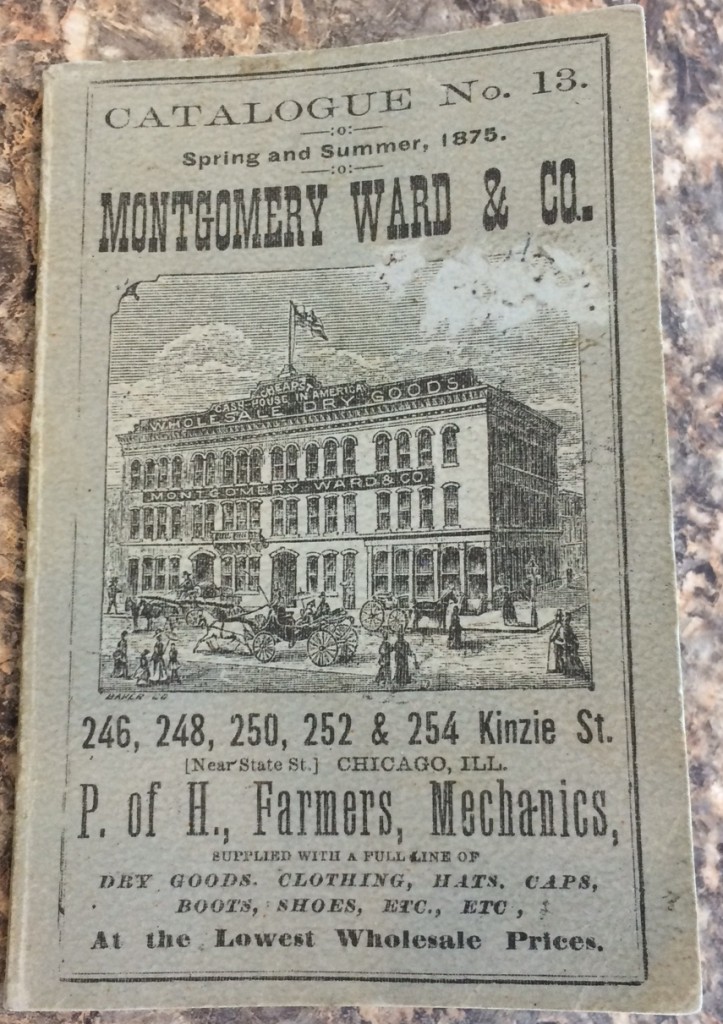
Montgomery Ward & Co. Catalogue No. 13, Spring and Summer 1875. Anniversary reproduction (unabridged facsimile) produced approx. 1975 by the Montgomery Ward company.
.
Most pages of this reproduction catalogue offer no pictures and no further information, so it’s hard to guess what dimensions of the first listing, item #1086, “good Commercial Note Paper”. At 37 and 1/3 cents for 120 sheets, even if this “good” paper was roughly 8.5 x 11-inches (today’s standard), it proves significantly more expensive than the 1895 offering. But note the foolscap listing. Foolscap had been common and standard throughout the 18th century in the British Commonwealth, and was simply common paper cut to 8.5 x 13.5-inches. In this 1875 catalogue, 120 sheets of foolscap sold for 90 cents– evidently larger in dimensions than the Commercial Note Paper.
.
[Note: This 1875 reproduction (and supposedly the original) is TINY. It measures roughly 4×5-inches and less than 1/4-inch thick.]
.

Advertisement for paper supplies and pencils, from The Council Grove Republican of Council Grove, Kansas on 28 January 1898.
.
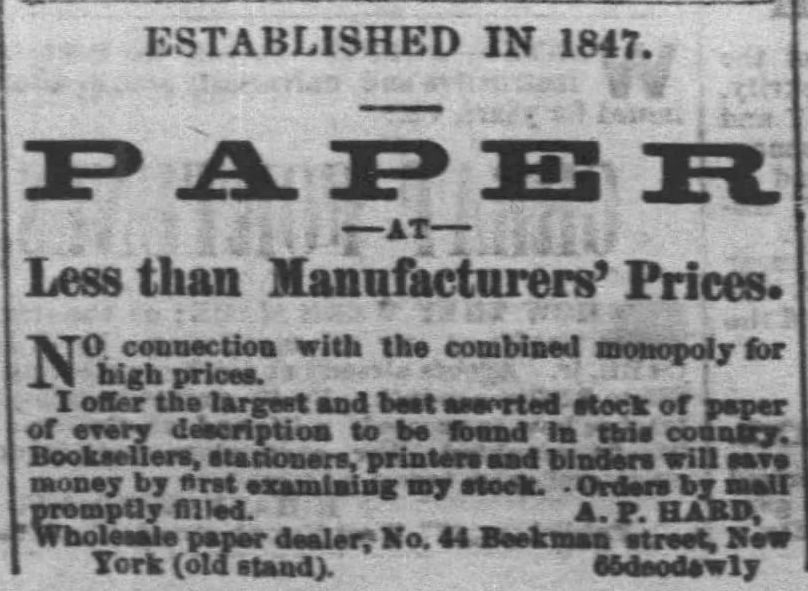
Advertised in the Daily Commonwealth of Topeka, Kansas on August 23, 1871, “Established in 1847. PAPER at Less than Manufacturers’ Prices.” Wholesale Paper Dealer in New York.
.
Throughout the Old West period, people had more options than ordering through mail-order businesses. Local stores carried paper, pencils, pens, etc. Their prices, at least as reflected in these two newspaper advertisements (in the 1890’s), seem to be quite competitive (though page count and size aren’t provided), though mail-order companies took pride in advertising the lowest prices possible (as they purchased in bulk and cut out the middle-man [shop owners]). Wichita and Council Grove weren’t necessarily remote locations, nor were they very far “west”, thus I imagine small country stores in out-of-the-way locations likely needed to (and could) charge more in order to cover freight and money invested in inventory.
.
Advertisement for Tablets, Paper, Pencils, Chalk. Posted in the Wichita Beacon newspaper, Wichita, KS, on 15 October 1894. Image: Courtesy of newspapers.com.
.
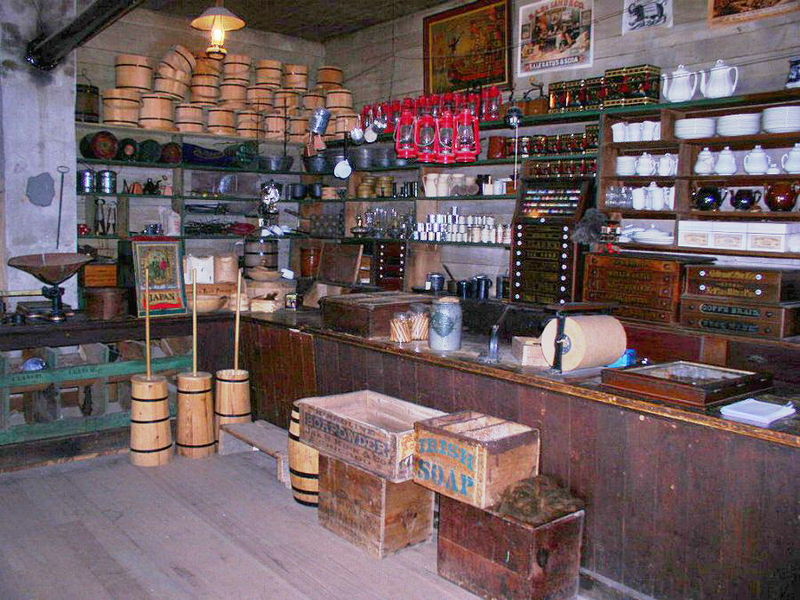
Note the roll of brown paper on the counter of Harkin’s 1870‘s General Store. Purchases were wrapped in brown paper then tied with twine. Image: Shared in accordance to all Creative Commons License requirements. By McGhiever (Own work) [GFDL (http://www.gnu.org/copyleft/fdl.html) or CC BY-SA 3.0 (http://creativecommons.org/licenses/by-sa/3.0)], via Wikimedia Commons. https://upload.wikimedia.org/wikipedia/commons/7/7a/HarkinStore1.jpg. https://commons.wikimedia.org/wiki/File%3AHarkinStore1.jpg.
Harkin’s Store, New Ulm, Minnesota
.
With prices such as these, is it any wonder frugal people saved the brown paper merchants used to wrap purchases and reused as much as possible? Along with many other products and manufacturing processes, paper-making’s boon came during the Industrial Revolution and wood pulp-based paper became affordable enough for everyone to buy and use (but probably not use wastefully). According to Wikipedia, new machines created in England were in use by at least one paper mill.
.
So, in short… yes. Paper was common (enough) in the Old West.
.
A cowboy might have pulled a used piece of foolscap out of his saddlebags to scribble a note in pencil (sharpened with his pocket knife), tear off the edge, and stake it to the trail… but a well-to-do Miss (say, a daughter of a mayor in a western town) would have had access to pretty stationery to write love letters to her beau.
.
Related Articles
.
How did our great-great grandmothers order from the catalogue? After all, the process was so very different than today’s online shopping. Read all about it here:.
.
Updated June 2022
Copyright © 2016 Kristin Holt LC
Paper: Common in the Old West? Paper: Common in the Old West?

